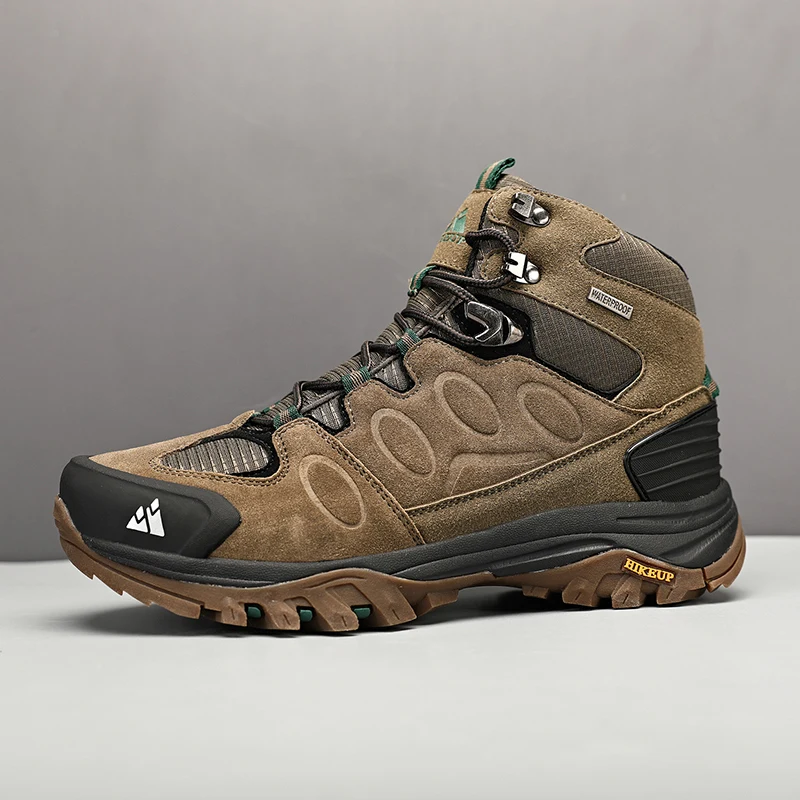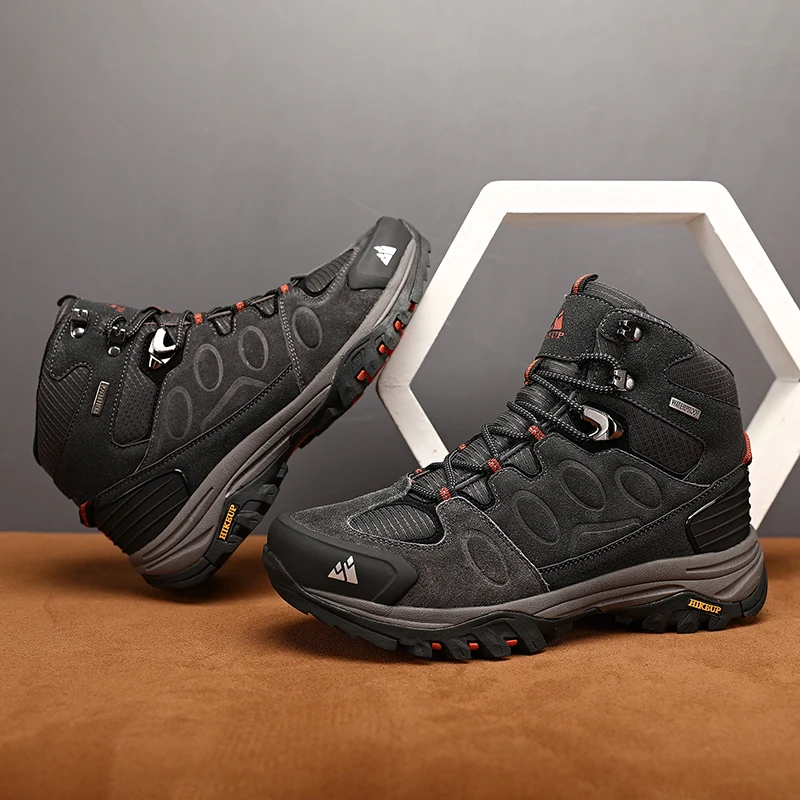Introduction to Insulated Hiking Boots
When temperatures drop, your feet need extra protection to keep warm and comfortable during outdoor excursions. Insulated hiking boots are specifically designed to provide that warmth and protection. Unlike regular hiking boots, they come with added insulation, which is essential for cold-weather adventures.

Designed to combat the challenges of winter hikes, insulated boots feature materials that trap heat, providing a cozy environment for your feet. They are also built with waterproofing capabilities that help prevent moisture from snow and slush from soaking through. With rugged soles for superior traction, these boots are reliable companions on icy and snowy terrains.
Whether you’re trekking through deep snow or navigating slippery trails, the right pair of insulated hiking boots can make all the difference in your comfort and safety. In the following sections, we’ll explore the key features of insulated boots, offer recommendations for different winter conditions, and provide tips to maintain and care for your boots. So, lace-up and let’s dive into the world of insulated hiking boots to prepare for your next cold-weather adventure.
Key Features of Insulated Hiking Boots
Choosing the right insulated hiking boots is key for cold-weather hiking success. Look for these important features when picking your pair:
Waterproofing Capabilities
Waterproof boots are a must for wet, snowy conditions. Ensure your boots have a good waterproof lining, like Gore-Tex, to keep feet dry.
Traction and Grip on Various Terrains
A sole with deep lugs will provide better grip on ice and snow. Look for boots with a lug depth of at least 4mm.
Insulation Materials and Warmth Retention
Boots with thick, quality insulation materials, like Thinsulate or Primaloft, are best for retaining heat. Aim for boots with at least 200 grams of insulation for cold hikes.
Durability and Build Quality
Durable materials like leather and strong synthetic fabrics ensure your boots last longer. Reinforced toe caps add extra protection and longevity.
Comfort and Fit for Long Hikes
A boot that fits well is crucial. It should have enough room to wiggle your toes but not slip off your heel.
Weight and Mobility Considerations
Lighter boots increase mobility but may offer less insulation. Balance the need for warmth with the ease of movement for your hiking conditions.
Best Insulated Hiking Boots for Different Conditions
Not all winter hikes are the same, and neither are the boots needed for them. Here’s a guide to help you find the right insulated hiking boots for specific conditions.
Top Picks for Extreme Cold Conditions
For brutal cold, you’ll want boots with hefty insulation, at least 400 grams, and a high cuff to seal in warmth. Select boots that have a tough, waterproof exterior and can handle sub-zero temperatures with ease.
Recommended Boots for Wet and Slushy Trails
Trails that are wet and slushy require boots with excellent waterproofing and mid-weight insulation, around 200 grams. These boots should have a gusseted tongue and moisture-wicking liners to keep feet dry.
Lightweight Options for Mild Winter Hikes
For mild winter climates, go for boots that are lighter and allow more movement. These should still offer waterproof protection and around 100 grams of insulation to maintain warmth without overheating.
Models with Superior Ankle Support
Challenging terrain calls for boots with solid ankle support. Look for models with sturdy midsoles and adequate collar padding, which help stabilize steps and protect against sprains.
Maintenance and Care Tips for Your Insulated Boots
Proper care boosts boot life and keeps feet warm and dry. Follow these tips.
Proper Cleaning Practices
After each hike, remove dirt with a brush. Use mild soap and water for tough grime. Air dry boots away from direct heat to prevent damage to insulation.

Storage and Preservation Tips
Store boots in a cool, dry place. Avoid damp areas which can cause mold. Keep boots unstuffed to hold shape. Consider a boot rack for organized storage.
Common Mistakes to Avoid When Choosing Insulated Hiking Boots
Selecting the right insulated hiking boots is crucial for winter trekking. Here are some pitfalls to avoid:
Ignoring the Fit
Don’t guess your size. Try boots on with hiking socks to ensure a snug fit. Tight boots can cut off circulation, while loose ones may cause blisters.
Neglecting Boot Height
For deep snow, choose high-cut boots. Low-cut boots won’t keep snow out as effectively.
Overlooking Insulation Weight
Boots with too much insulation can overheat feet on mild days. Choose insulation weight based on anticipated weather conditions.
Skipping the Waterproof Test
Test boots for waterproofing before you buy. Walk through water if possible or check for a waterproof seal around the boot.
Missing Out on Flexibility
Boots should allow ankle movement. Rigid boots can restrict natural walking motion, leading to discomfort.
Forgetting to Check the Sole
Ensure soles have deep lugs for traction on ice and snow. Worn-out or flat soles can be dangerous.
Buying Based on Looks Alone
Functionality trumps style for hiking boots. Don’t sacrifice essential features for a more stylish look.
By steering clear of these errors, you increase your chance of purchasing a pair of insulated hiking boots that will serve you well throughout the winter hikes.
Maintaining Your Insulated Hiking Boots
Cleaning and Care
Taking care of your insulated hiking boots is essential for longevity. After each hike, remove dirt and mud from the boots. Use a soft brush or cloth to wipe them down. For deeper cleaning, use warm water and a mild soap solution. Avoid harsh chemicals that can damage the materials.
Always let your boots dry naturally. Avoid placing them near direct heat sources, as this can cause the materials to crack or warp. If your boots become wet inside, remove the insoles and let them air out. You can stuff them with newspaper to help absorb moisture.

Inspecting for Damage
Regularly inspect your hiking boots for any signs of wear or damage. Check the soles for tread wear and replace them if necessary. Look for cracks in the waterproof membrane or any seams that may be coming apart. Early detection of these issues can prevent larger problems down the road.
If you notice any damage, take your boots to a professional for repair. Many outdoor retailers offer repair services for hiking boots. This can extend the life of your boots and save you money in the long run.
Hiking with Insulated Boots
Preparing for Your Hike
Before heading out on your hike, make sure to prepare properly. Check the weather conditions and dress appropriately. Wear moisture-wicking socks to keep your feet dry. Avoid cotton socks, as they trap moisture and can lead to blisters.
Also, pack essential items such as water, snacks, and a first aid kit. Ensure your hiking gear is suitable for the trail and weather conditions. Having everything organized will make your hike more enjoyable and safer.
Tips for Comfort on the Trail
During your hike, listen to your body. If your feet begin to feel cold or uncomfortable, take a break. Remove your boots to let your feet breathe. You can also wiggle your toes to stimulate circulation.
Stay hydrated throughout your hike. Drinking water helps maintain body temperature and keeps your energy levels up. Take regular breaks to rest your feet and enjoy the scenery.
Conclusion: Final Thoughts on Selecting the Right Boots
Picking the perfect insulated hiking boots can be a game-changer for your winter treks. Opt for boots with proper insulation, suited for expected temperatures. Ensure they have reliable waterproofing to keep feet dry. A snug fit promotes warmth and prevents blisters. High-quality soles with deep lugs will give you confidence on slippery paths. Remember to care for your boots regularly to extend their life. Avoid common mistakes, like overlooking proper fit or sacrificing necessary features for style. Smart choices in your insulated hiking boots will lead to warmer, more enjoyable winter hikes. Stay prepared, stay warm, and embrace the beauty of winter trails with the right footwear.
